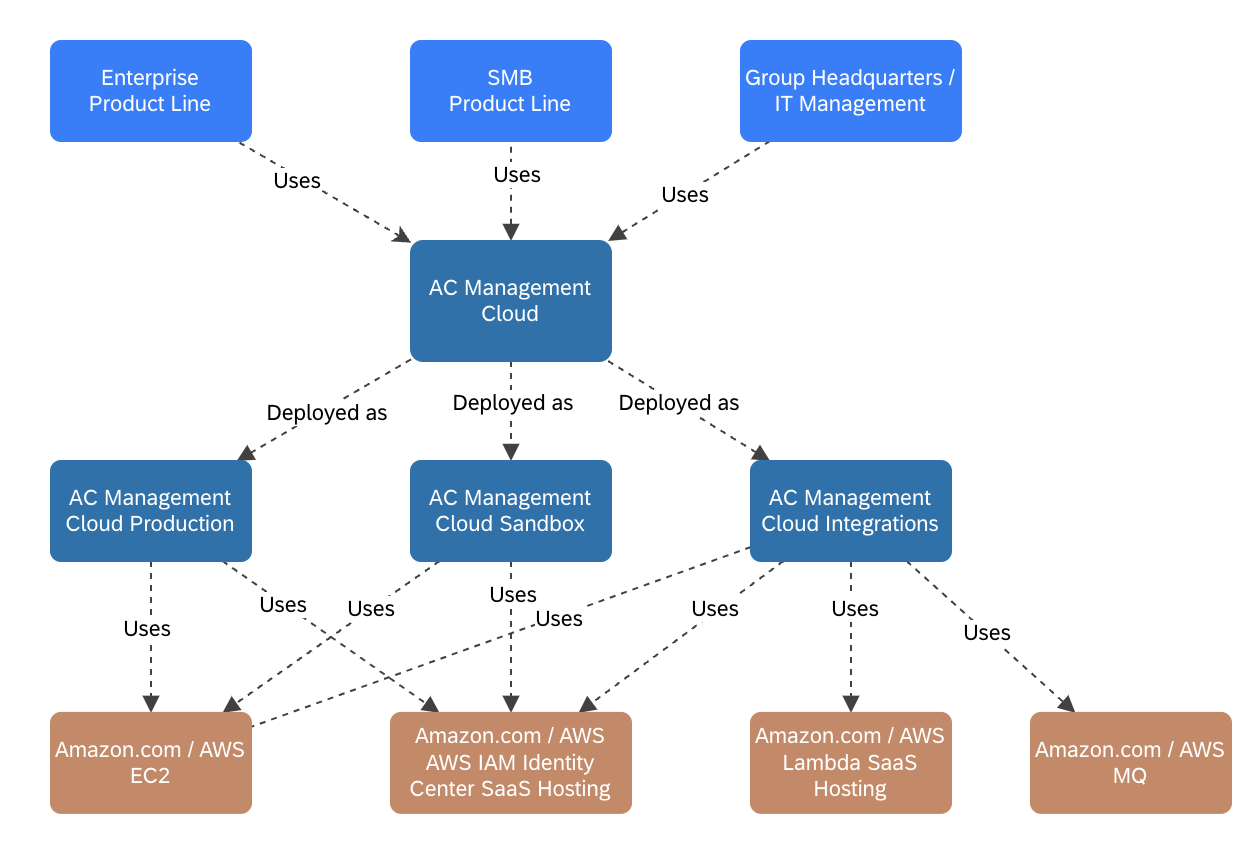Deployment Modeling Guidelines
This page covers modeling guidelines for deployments. Learn best practices for tracking their provisioning and dependencies effectively and avoid common antipatterns.
Definition
Deployments are technical instances of an application in different environments, such as testing, staging, sandbox, quality assurance, and standby fallback environments. Deployments, on their own, do not serve a business purpose.
Modeling deployments allows you to capture provisioning details, such as where an application is running, the resources it requires, and its operational needs. It helps track internal cost allocation, technical dependencies, and risks.
Note
Deployment subtype is not included in the predefined meta model by default. You can add it by following the instructions in the guide: Add Fact Sheet Subtype. After adding the subtype, also create custom self-referencing relations between other application fact sheet subtypes. To learn how to create such relations, see Fact Sheet Relations.
Also, note that since it is a custom relationship, obsolescence risk is not aggregated. To know which relationships are considered for obsolescence risk aggregation, see Obsolescence Risk View Aggregation.
Modeling Deployments
SAP LeanIX offers the deployment subtype to help organizations manage and track the application deployed in various technical environments such as testing, development, quality assurance, staging, etc.
IT Service Management (ITSM) standardizes aspects like the provisioning of different technical environments, user access management, internal cost allocation, etc. The deployment subtype helps you align with ITSM by ensuring that the applications in these technical environments are effectively tracked and managed. This enhances visibility and control over IT resources across different stages of the application lifecycle and environments.
Modeling deployments provide value in specific scenarios:
- To manage obsolescence risk in different environments. For example, whether an older version of a microservice is used in a development or staging environment and is known to have risks.
- For a detailed understanding of technical dependencies for transformation planning, in particular, ERP transformation.
We strongly recommend automating the creation and management of deployment fact sheets using Configuration Management Databases (CMDBs), such as ServiceNow. As the number of deployments grows, manually managing deployment details can take a lot of time and effort. Leverage ServiceNow integration to efficiently manage deployment fact sheets by mapping 'Application Services’ from ServiceNow to SAP LeanIX. For more details, see ServiceNow Integration.
Since deployments, on their own, do not serve a business purpose, they do not exist independently of the business application. They must be related to the business layer through the business application subtype.

Modeling Deployments
Note
Deployment fact sheets do not count for pricing, but they must not have direct relations to business capability or business context fact sheets.
| Application Instances Modeled as Deployments | Application Instances Modeled as Applications |
|---|---|
| Testing and Sandbox environments Staging and Quality Assurance environments Stand-by fallback environments | Business applications serving business purposes, such as regional instances of applications, application instances having different data centers, different cloud providers, etc. They must be modeled as separate applications and not as deployments. For example: Regional application instances - SAP FI France, SAP FI Germany, etc. Application instances in different business units - SAP FI BU1, SAP FI BU2, etc. |
Updated 5 months ago
